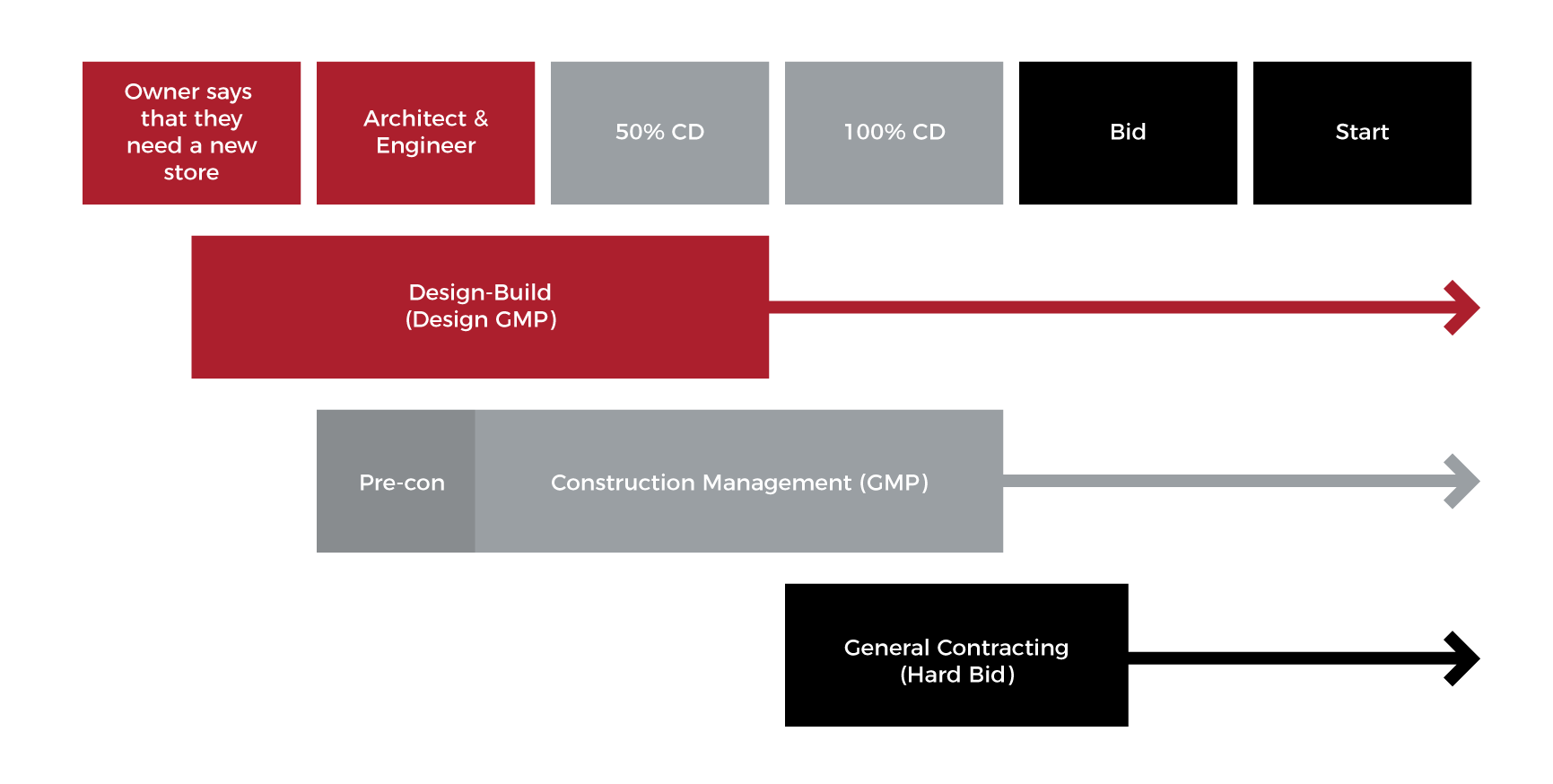Construction Management-At-Risk (CM-At-Risk) contracting by its very nature results in more informed decision-making and more collaborative problem-solving.
At Oelrich Construction, we focus on providing our clients with the best value for their investment through Construction Management-At-Risk services. CM-At-Risk projects are transparent and open book. They encourage more effective communication with the architect/engineering team, which leads to a higher-quality facility.
The advantages of engaging our team as your CM-At-Risk include:
Quality facilities are a long term investment. Industry case studies show that constructability reviews can save as much as 3 to 5 percent* of the entire project’s construction cost by minimizing RFIs, preventing change orders in the field, and reducing the risk of conflicts between engineering/design documents. As CM-At-Risk, our team proactively identifies any inconsistencies or ambiguity in the design documents by carefully reviewing all construction drawings, especially structural elements; building envelope integrity; interior build-out/architectural details; mechanical, electrical and plumbing systems (MEP); and sitework. Proposing material substitutions like less expensive facade materials, different glazing options, and more cost-effective stormwater management systems can result in substantial cost savings early on.
By engaging a CM during the design phase, clients benefit from immediate, realistic forecasting adapted to their unique deadlines. Fast-tracked projects with short construction deadlines are feasible through CM-At-Risk contracting because our team can begin collaborating with the architect/engineer before the design documents are complete. For instance, our team can quickly identify long-lead time items like mechanical systems on the front end, break out early bid packages that anticipate production or shipping times, and release them before other less time-sensitive building components are determined.
We understand that building construction delays can drastically impact a client’s business. Mission-critical deadlines like Fall semester college class start dates, apartment move-in dates, or restaurant dinner hours can result in thousands of dollars of lost revenue. No one wants a speciality freight elevator’s four month production time to delay a 30 day renovation schedule. Working with Oelrich Construction from day one gives clients the results they need.
Built on transparency and open communication, CM-At-Risk projects tend to have more synergistic working environments. Our team champions the client’s needs and guarantees that all priorities are achieved. Client building location and technical specifications are evaluated by our experienced, cross-disciplinary team of project managers, field superintendents, estimators, and project engineers. Our diverse expertise is translated into tailored strategies that weigh client budget constraints, user group needs, project scheduling requirements, environmental sustainability options, and long-term facility operations & maintenance. The CM-At-Risk process is also more conducive for specialty requirements like U.S. Green Building Council Leadership in Energy and Environmental Design (LEED) certification, which often require in-depth strategy/planning.
Why is CM-At-Risk growing in popularity? How does the selection process work?
CM-At-Risk emerged in response to the traditional design-bid-build method. Typically, General Contracting doesn’t begin until all architecture/engineering services have been completed. There is a higher probability of cost increases (also known as change orders) due to scope holes and design ambiguities. The contractor generally has no opportunity for cost-savings input or time-savings recommendations. Typically the client selects the contractor based on the lowest price. Low bids don’t budget for contingency items like unforeseen conditions (hidden asbestos, utility conflicts, and other unknowns). If not all research is conducted on the front end of general contracting project, the “lowest responsive bid” at the beginning of a project may not be the lowest actual price at the end of a project. Because of these disadvantages, many private and public sector organizations have adopted the CM-At-Risk delivery method in recent years.
CM-At-Risk selection is typically based on a competitive qualifications/interviewing process. CM fees are agreed upon at the beginning of the project as either a percentage of the cost of the work or as a fixed sum. Our team submits a Guaranteed Maximum Price (GMP) at the beginning of the project, ensuring that the project stays within each client’s budget.
When Micanopy Area Cooperative School hired Oelrich Construction to construct their new cafeteria/auditorium building, budget was their foremost concern. Understanding that the charter school had to crowd-fund a portion of the project cost from parents and alumni to make ends meet, we recognized how crucial it was to build an affordable, high-quality facility for the community. Our team went through each line item with the client to identify priorities and offer sound alternative material recommendations. We successfully cut costs and reduced the school’s Guaranteed Maximum Budget by 20 percent.
GMP Savings
Client Success at Micanopy School
GMP Savings
Client Success on NW 8th Avenue
The 3.5 mile NW 8th Avenue Reconstruction and Creek Sediment Control project involved road resurfacing, sidewalk reconstruction, new medians, ADA ramps, pedestrian activated rapid flashing beacons, culvert installation, and creek restabilization. Our team worked closely with the City of Gainesville’s Public Works Department to coordinate with affected stakeholders and achieve the community’s vision. This complex project was completed on schedule with an owner’s savings of nearly 10 percent of the total cost.
Project Schedule& Timeline
